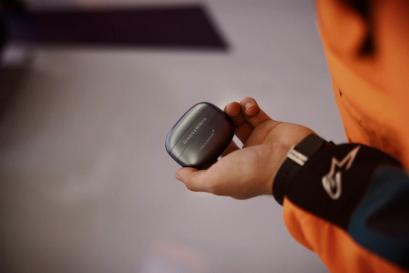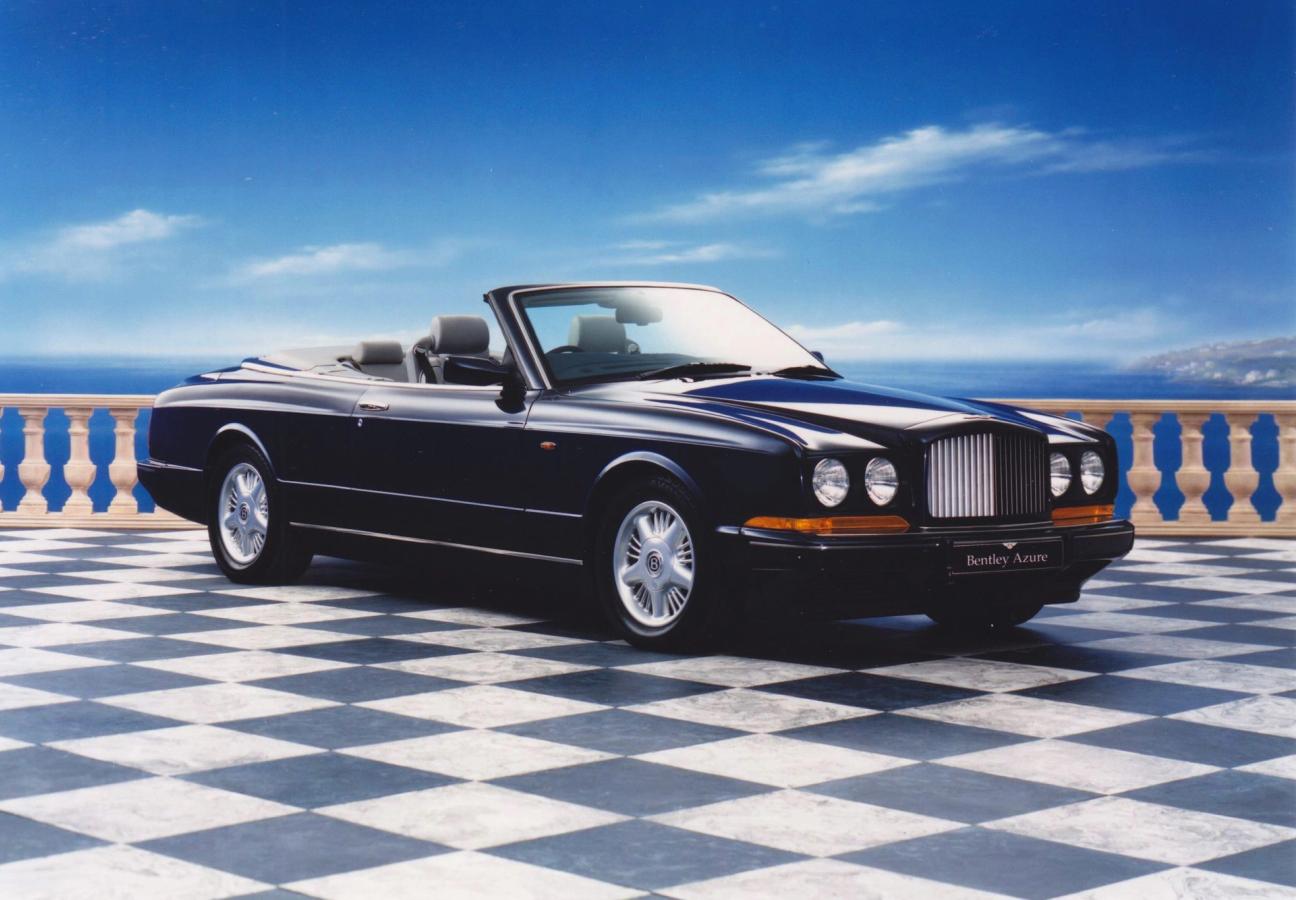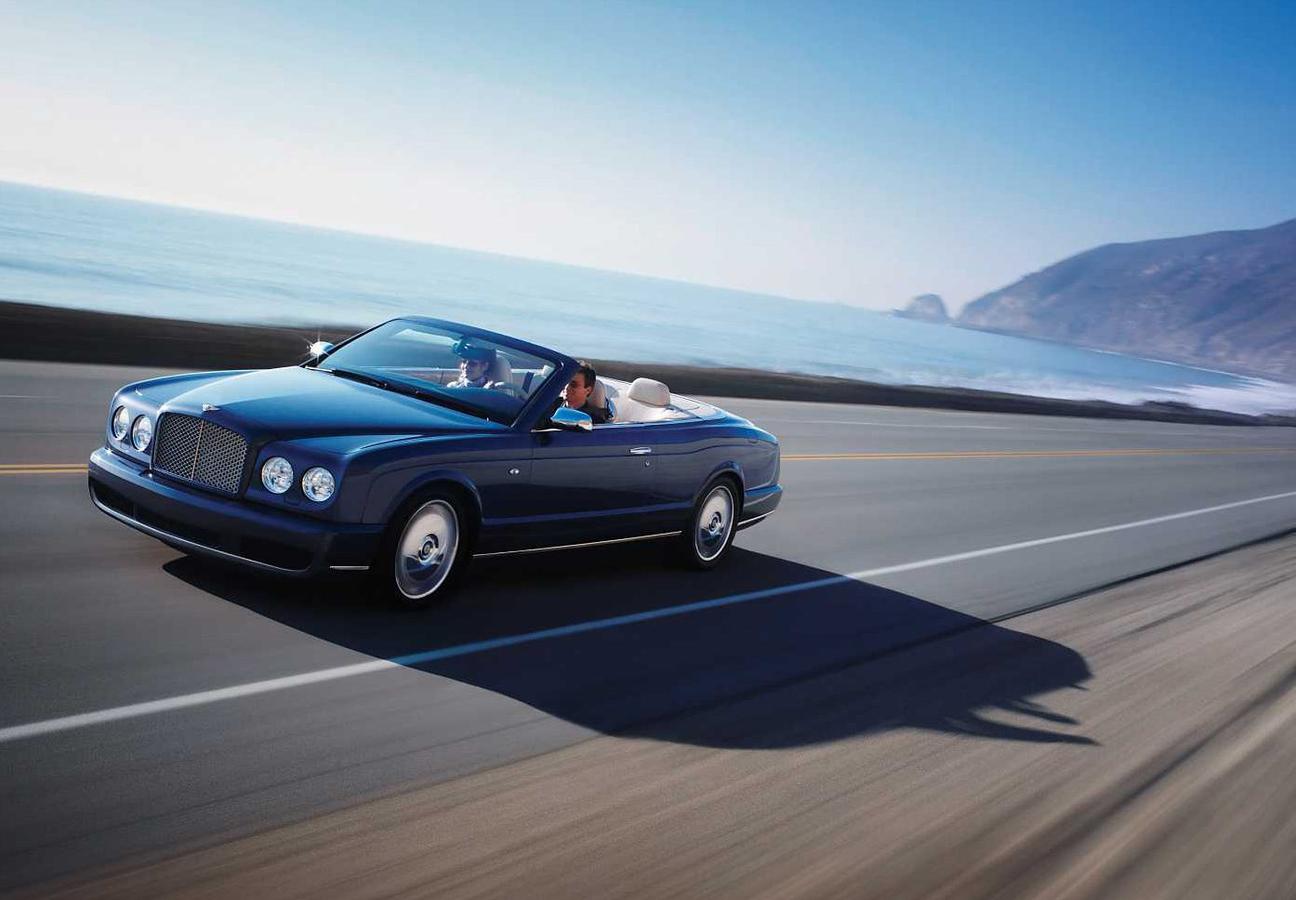

Words: Jonathan Wells
We’ve always felt slightly sorry for the Bentley Azure. Not during its heyday, of course. For the latter half of the nineties, the great grand tourer could be spotted drop-topping and beach-hopping around the French Riviera with the best of them. But, after a shaky reinvention a decade down the line, the British carmaker’s flagship convertible couldn’t quite cut it in the new millennium. It stalled, it stopped — and it was stuffed away into the history books.
So far, so normal. Falls from fashion are common in the car industry, and obsolescence is to be expected. But it’s what Bentley did next that really tugs at our heartstrings. Just five years after the last ever Azure rolled off the production line — by which time the Mulsanne-derived Grand Convertible had become its de facto successor — the manufacturer resurrected the name. As an aftershave.
Bentley for Men Azure may have been ‘an invigorating, stimulating cocktail of fresh citrus, delicious fruity pineapple and the exhilarating herbaceous aroma of violet leaves’ — but it was a perfume all the same. And, while this scent was being slapped on necks in bathrooms around the country, it was also slapping the old Azures in the face, even as they sat forgotten in garages downstairs. Can you ever imagine Lamborghini relaunching the Countach as a cologne? Or Rolls-Royce’s Silver Shadow riding again as an eau de toilette? We can’t.
So what happened? Why did the Bentley Azure, mere years after being proudly driven by celebrities including Mark Wahlberg and Simon Cowell, fade into automotive obscurity? To get to the bottom of things, we must start at the top.

The 1995 Geneva Motor Show set the stage for the Azure’s big reveal. Bentley, at that time under the control of Vickers Plc, had tasked the legendary automotive design house Pininfarina with turning its existing Continental R into a drop-top. It wanted it to be luxurious, it wanted it to be long — and it wanted it to be the most decadent four-seater grand tourer money could buy.
Pininfarina, for the most part, delivered. The Italians built the shell and soft top in their Florentine factory, before shipping the whole lot across to Crewe, where it would be assembled with the trusted Bentley touch. Then, in time for Geneva, it was back to Europe for the big reveal.
And big’s the word. At well over five metres in length and almost three tonnes in weight, the Azure startled the journalists and tradespeople at the car show with its sheer size. Here was a car both longer and heavier than any other convertible driving around at the time. It was a sizeable gamble — but one that worked to Bentley’s advantage.
The carmaker hadn’t compromised, and that was seen to be a good thing. Contemporary commentators may have had issues around the practicality of such a big car, but even the most pernickety critics couldn’t deny that this was undeniably a Bentley. It comfortably sat four passengers, it maintained the stately-home looks of the Continental R, and it could still move. It could really move.
The carmaker had spared no expense in the engine bay, installing its reliable 6.75-litre V8 with a single, intercooled Garrett turbocharger and Zytek engine management system. And this made the Azure fast — especially considering the size of the thing, and the fact that it was a convertible. You could accelerate to 60mph in a mere 6.6 seconds, and tear on to a top speed of over 150mph.
Unfortunately, the production wasn’t as quick as the car. By the end of its first year in production, only three Azures had been built. This number steadily increased, however, as production started in earnest, and figures swelled to a peak of 229 in 1996. By this time, the Azure had become a cultural icon, and anyone who considered themselves anyone on the Côte d’Azur was driving Bentley’s big convertible. The cars were drop-top symbols of excess and glamour, cruising confidently around cosmopolitan cities, coastal resorts and the sunny European countryside in both style and comfort. If you were spotted behind the wheel of an Azure, people would know that you’d made it.
But the honeymoon was to be short-lived. After several summers in vogue, the Azure began to age rapidly. Rolls-Royce debuted a new Corniche in 2000, the rival motor manufacturer’s own luxury four-seater cabriolet, and Bentley began to see the Azure’s global sales figures dwindle. Even despite a boost in 1999, when Bentley began offering a luxury ‘Mulliner’ trimmed Azure, the car only just made it into the new millennium.

By 2002, only 78 Azures were being built per year, and the car looked to have had its day. Volkswagen had bought Bentley in 1998 and, although it had started work on a successor, there was no real news between the first generation’s discontinuation in 2003 and the launch of the second generation in 2006. But a second generation there eventually was — this time built on Bentley’s Arnage platform.
With Bentley’s twin-turbocharged V8 under the bonnet, and similar styling, the new Azure was more of the same. It lacked the bold reinvention people were looking for from a new model, and many thought its design brash when compared with its predecessor. Motoring magazine EVO even described the car as “a two-and-a-half ton sunbed”.
“If we had £230,000,” the magazine’s review added, “we’d buy a yacht.” It would appear, from the lacklustre sales figures, that potential buyers heeded EVO’s advice. The new Azure simply hadn’t recaptured the bold, fresh charm of the original Azure and, as we barrelled into a recession, its writing was on the wall. Even a last throw of the dice — the Azure T, with its two-piece alloy wheels, ‘Le Mans’ wing vents and Naim audio system — couldn’t rekindle interest. By 2010, the Azure was dead.
It was an unceremonious end for a car that had perhaps overstayed its welcome. Back in the mid-nineties, the Azure was newfangled and novel; a never-before-seen blend of old money motoring and new money glamour. The successor, in comparison, had leant too hard on curved, sporting looks. It lost some of its edge — quite literally — and, in doing so, confined itself to Bentley’s back catalogue forever.
Unfortunately, even the Azure’s successor, the Grand Convertible, did little to stir the soul. It debuted in Dubai in 2014, but only 19 were produced in total. But not to worry — because that was also the year a new scent spritzed to life. And, while Bentley For Men Azure, with its notes of cashmere wood and tonka bean, may not be as fitting a tribute to the Azure as we’d like, unfortunately it’s all we — and this once great car — have got.
Want more modern classics. We ask: Could the Volkswagen Golf Mk2 GTI be the hottest hatch of all time?
Join the Gentleman’s Journal Clubhouse here.


